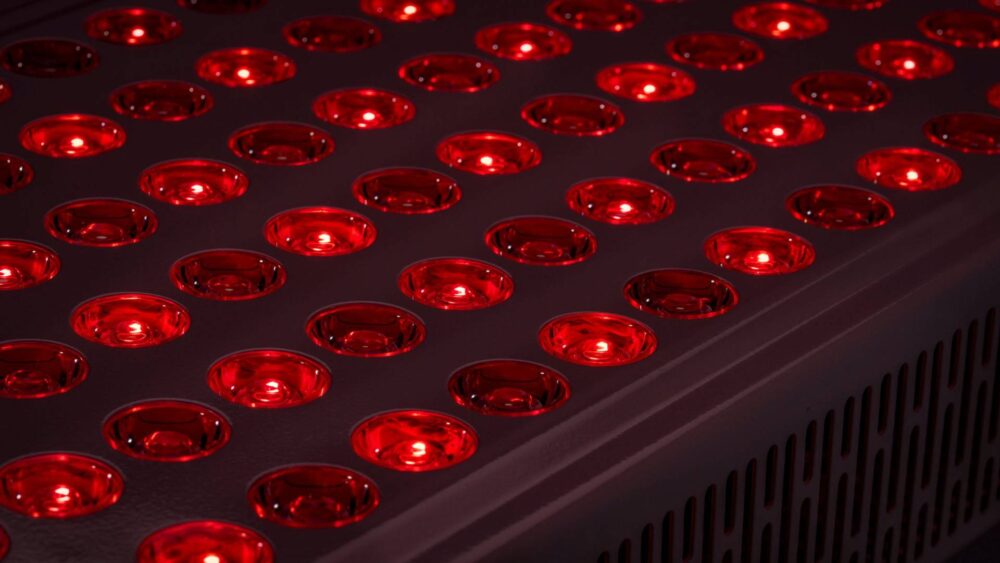
Chronic pain can be more than just a physical burden. It often impacts a person’s emotional and mental well-being, creating a ripple effect that affects their self-worth and overall quality of life. For individuals dealing with chronic conditions or aging-related pain, the journey toward healing is multi-dimensional. It involves not only medical treatments but also emotional and psychological support.
In recent years, red light therapy has emerged as a promising treatment for managing pain, reducing inflammation, and promoting healing. When combined with the compassionate care and emotional support provided by caregivers, this therapy can offer a holistic approach that nurtures both the body and the mind. In this blog, we’ll explore how red light therapy can be integrated into home care routines to provide relief from pain and enhance self-worth.
Understanding Red Light Therapy for Pain Management
Before diving into how red light therapy fits into home care, it’s important to understand what it is and how it works. Red light therapy involves the use of low-wavelength red light to penetrate the skin and stimulate cellular processes. This therapy, sometimes referred to as low-level laser therapy (LLLT), has been shown to promote tissue repair, reduce inflammation, and relieve pain.
The science behind red light therapy lies in its ability to stimulate the mitochondria within cells. Mitochondria are the powerhouse of the cell, responsible for producing energy. When red light is absorbed by the skin, it increases the production of adenosine triphosphate (ATP), the energy source for cells. This boost in ATP promotes faster healing and reduces the pain associated with inflammation or injury.
Numerous studies have shown that red light therapy is effective in treating conditions such as arthritis, joint pain, muscle soreness, and even nerve pain. For individuals in long-term home care, this non-invasive treatment can provide much-needed relief, improving their physical comfort and overall health.
The Role of Caregivers in Pain Management
While red light therapy is an excellent tool for pain management, the role of caregivers cannot be overstated. Caregivers are often the ones who are closest to the individual, both physically and emotionally. They help manage daily tasks, provide physical care, and offer emotional support. When it comes to pain management, caregivers play a critical role in ensuring that treatments like red light therapy are applied consistently and effectively.
Caregivers can assist with the physical application of red light therapy devices, such as therapy belts or handheld units. These devices are often easy to use and can be incorporated into a daily routine with minimal effort. For example, a caregiver can help position the device on the area of pain, ensuring that the therapy is delivered correctly and for the appropriate duration.
Beyond the physical aspect, caregivers can also help create an environment conducive to healing. Emotional support, encouragement, and companionship can make a world of difference for someone dealing with chronic pain. A positive and nurturing attitude can reduce feelings of isolation or frustration, which are common among individuals with chronic pain.
Caregivers should also remain vigilant, monitoring the person’s response to red light therapy and adjusting the routine if necessary. Communication with healthcare providers is key to ensuring that the therapy is safe and effective for each individual.
Boosting Self-Worth through Caregiving
Chronic pain often leads to a sense of helplessness or a diminished sense of self-worth. For many individuals, it can feel like their bodies are betraying them, making it difficult to engage in daily activities or maintain independence. This can lead to depression, anxiety, and a feeling of being a burden on others.
However, caregivers can play a significant role in boosting self-worth by offering emotional support and encouragement. One of the most powerful ways caregivers can enhance their loved one’s self-esteem is by focusing on their strengths rather than their limitations. For example, caregivers can remind their loved ones of the skills and accomplishments they’ve achieved in the past, reinforcing their value and capabilities.
In addition, caregivers can encourage independence in small, manageable ways. This could be as simple as allowing the person to do small tasks on their own, such as dressing or preparing a meal, with assistance as needed. When individuals feel empowered to participate in their own care, it fosters a sense of accomplishment and pride.
Red light therapy itself can also play a role in boosting self-worth. As the therapy reduces pain and improves mobility, individuals may feel more capable of engaging in activities they once enjoyed. This sense of physical improvement can lead to an increase in self-confidence and a more positive outlook on life.
How Red Light Therapy and Caregiving Work Together for Holistic Healing
The integration of red light therapy into a home care routine represents a truly holistic approach to healing—addressing both the physical and emotional aspects of pain management. The benefits of red light therapy are most noticeable when it is combined with a supportive caregiving environment.
For example, a caregiver who helps with the application of red light therapy while also offering emotional support creates a comprehensive healing experience. The individual is not only receiving physical relief from their pain but also benefiting from the emotional care that strengthens their mental resilience.
Additionally, caregivers can monitor the effectiveness of red light therapy over time, noting any improvements or changes in pain levels, mobility, or mood. If the therapy isn’t producing the desired effects, caregivers can consult with healthcare professionals to adjust the treatment plan.
One of the key components of this integrated approach is consistency. Red light therapy typically requires regular sessions to achieve lasting results. By incorporating this into a caregiver’s daily routine, individuals can enjoy the benefits of consistent therapy while also receiving the emotional and physical care they need.
Practical Tips for Integrating Red Light Therapy into Home Care
If you’re a caregiver looking to integrate red light therapy into your loved one’s home care plan, here are some practical tips to get started:
-
Choose the Right Device: There are various types of red light therapy devices available, including handheld devices, therapy belts, and even full-body panels. When selecting a device, consider factors such as the intensity of the light, ease of use, and the specific area of pain that needs to be treated.
-
Create a Routine: Incorporate red light therapy into a daily or weekly schedule. Consistency is key to maximizing the benefits of this therapy. You might want to set a reminder to ensure that the therapy is applied at the same time each day.
-
Combine with Other Pain Management Techniques: While red light therapy is effective, it works best when combined with other pain management strategies, such as physical therapy, stretching, or medication (as prescribed). Caregivers should work with healthcare providers to create a well-rounded pain management plan.
-
Encourage Positive Interaction: While administering therapy, engage in light conversation or offer emotional support. This interaction not only strengthens the caregiver-patient bond but also contributes to the person’s emotional healing.
-
Track Progress: Keep a journal of your loved one’s pain levels, mood, and physical ability over time. This will help you determine if the therapy is effective and provide valuable insights when discussing the treatment plan with healthcare providers.
-
Stay Informed: Red light therapy is an evolving field, and new advancements may arise. Stay informed about new developments in red light therapy devices or techniques to ensure that your loved one is receiving the best care possible.
Conclusion
Red light therapy offers a promising solution for managing chronic pain, and when combined with compassionate caregiving, it becomes an even more powerful tool. By addressing both the physical and emotional aspects of pain management, caregivers can help their loved ones heal and maintain their dignity, independence, and self-worth.
If you’re a caregiver looking to enhance your loved one’s quality of life, consider exploring red light therapy as part of your home care routine. With the right device, a consistent schedule, and a supportive environment, you can help foster physical recovery and emotional resilience, empowering your loved one to live with less pain and more joy.






